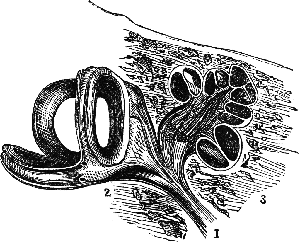Nervous success from ear invention therapy
 Researchers have used electrical pulses delivered from a cochlear implant to provide gene therapy, successfully regrowing auditory nerves for the first time.
Researchers have used electrical pulses delivered from a cochlear implant to provide gene therapy, successfully regrowing auditory nerves for the first time.
The ground-breaking experiments herald a new way of treating many neurological disorders, including Parkinson’s disease and psychiatric conditions such as depression.
The novel way of delivering gene therapy was developed at the University of new South Wales and is described in the journal Science Translational Medicine.
The work centres on regenerating surviving nerves after age-related or environmental hearing loss, using existing cochlear technology.
“People with cochlear implants do well with understanding speech, but their perception of pitch can be poor, so they often miss out on the joy of music,” says UNSW Professor Gary Housley, who is the senior author of the research paper.
“Ultimately, we hope that after further research, people who depend on cochlear implant devices will be able to enjoy a broader dynamic and tonal range of sound, which is particularly important for our sense of the auditory world around us and for music appreciation,” says Professor Housley, who is also the Director of the Translational Neuroscience Facility at UNSW Medicine.
The cochlear implants are “surprisingly efficient” at localised gene therapy in animal models, when a few electric pulses are administered during the implant procedure.
It has been known for some time that auditory nerve endings will regenerate if neurotrophins – a naturally occurring family of proteins crucial for the development, function and survival of neurons – are delivered to the auditory portion of the inner ear, the cochlea.
But researchers have been unable to safely target neurotrophins alone using drug delivery or viral-based gene therapy.
Now they may not have to, instead using electrical pulses delivered from the cochlear implant to deliver the DNA to the cells close to the array of implanted electrodes. This causes the cells to produce neurotrophins.
“No-one had tried to use the cochlear implant itself for gene therapy,” says Professor Housley.
“With our technique, the cochlear implant can be very effective for this.”
In studies so far, the neurotrophin production was seen to drop away after a couple of months. Professor Housley says ultimately the changes in the hearing nerve may be maintained by the ongoing neural activity generated by the cochlear implant.
“We think it’s possible that in the future this gene delivery would only add a few minutes to the implant procedure,” says the paper’s first author, Jeremy Pinyon, whose PhD is based on this work.
“The surgeon who installs the device would inject the DNA solution into the cochlea and then fire electrical impulses to trigger the DNA transfer once the implant is inserted.”
More information is available in the following video;








 Print
Print